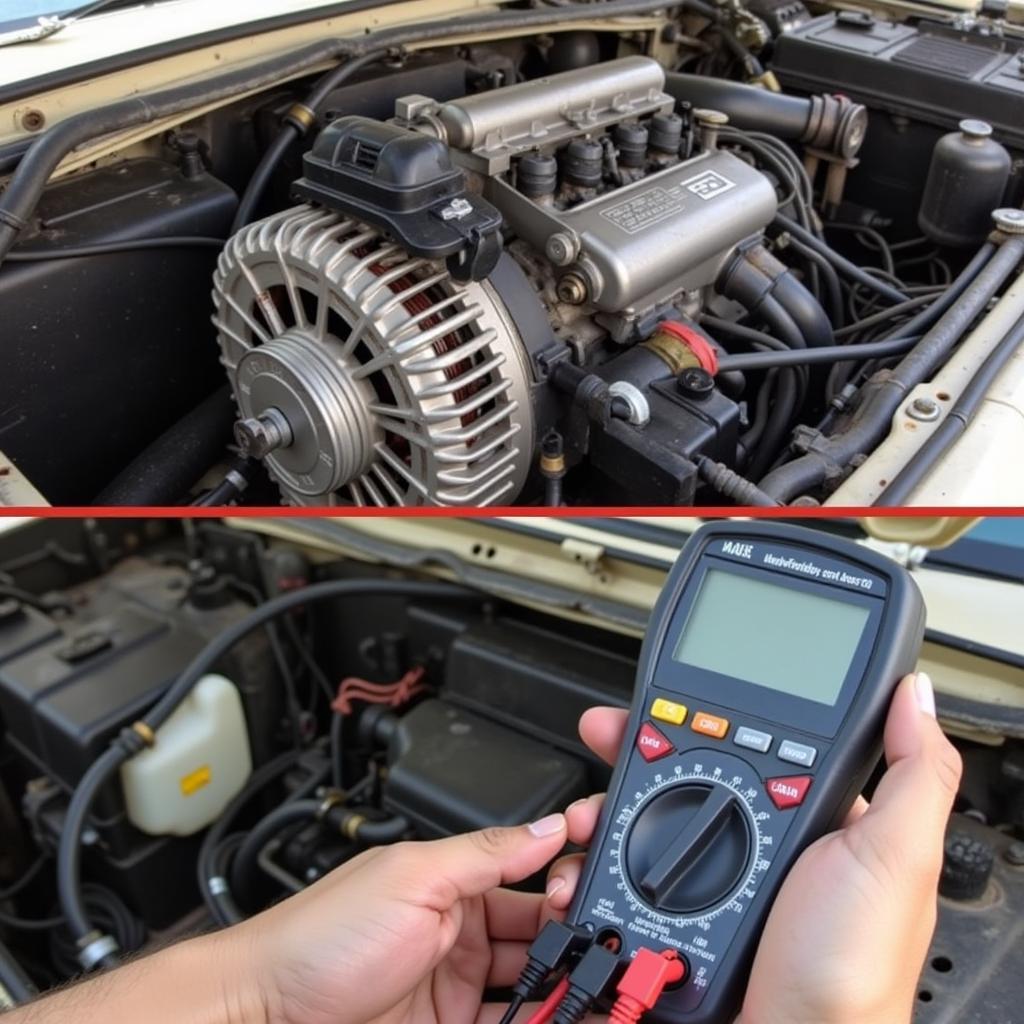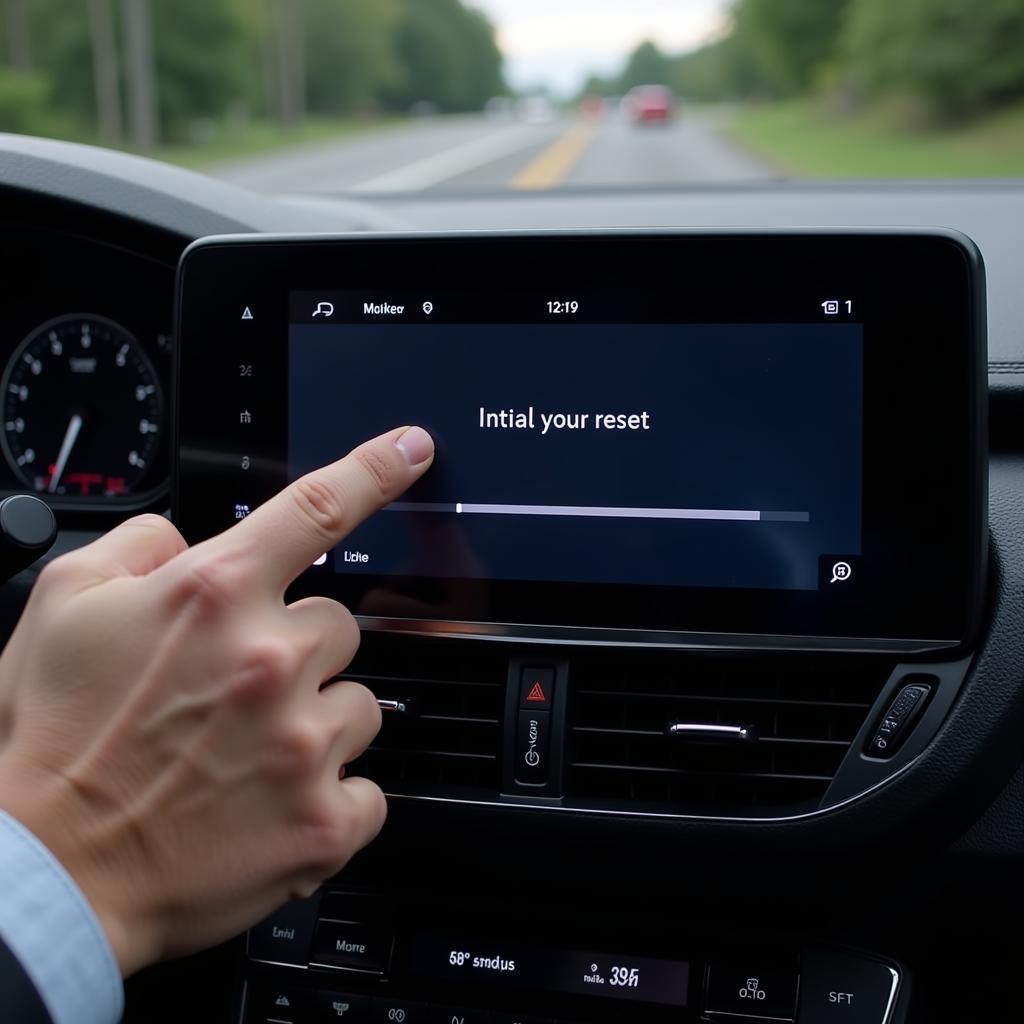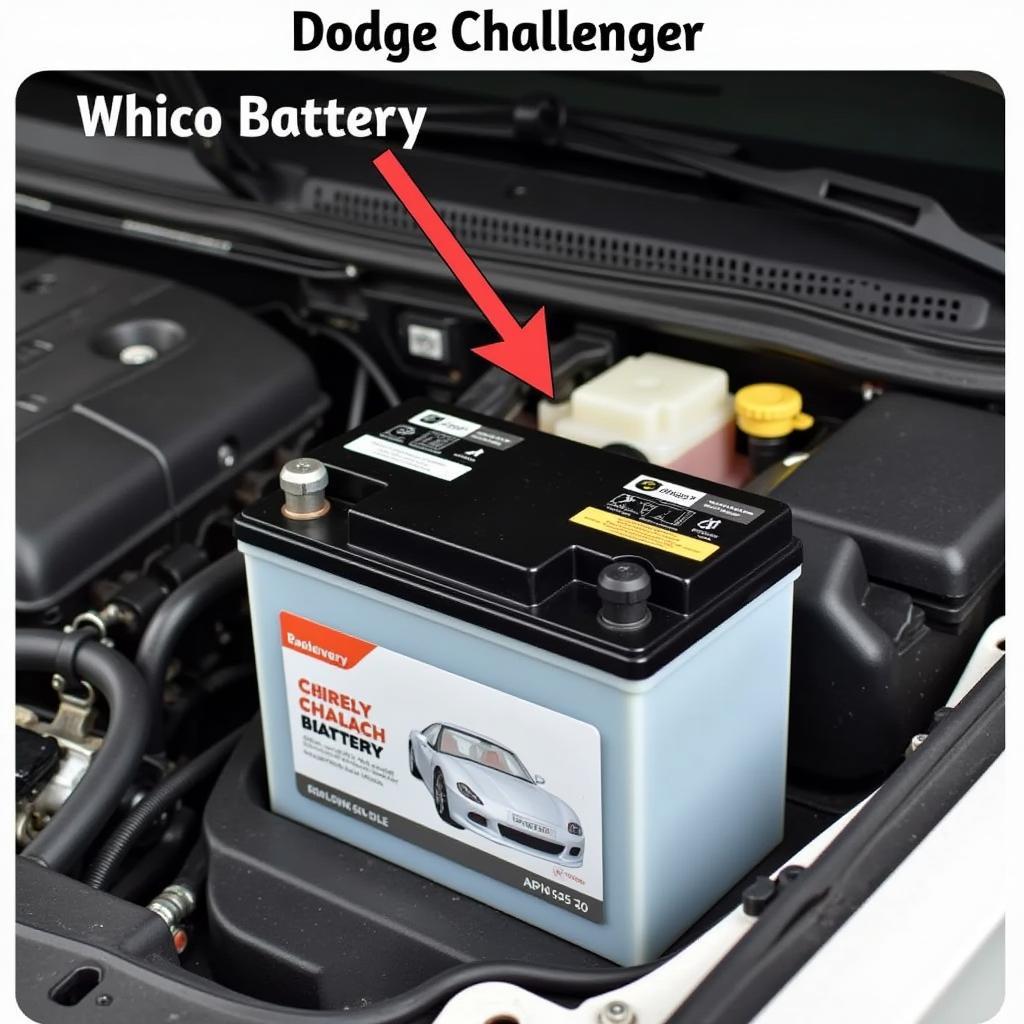If your 1992 Lexus LS400’s warning lights illuminate when applying the brakes, you’re likely experiencing a common yet potentially serious issue. This article will guide you through diagnosing and resolving this problem, empowering you to address it effectively and safely.
Understanding the Warning Lights in Your 1992 Lexus LS400
Before diving into troubleshooting, it’s crucial to understand what those warning lights signify. In a 1992 Lexus LS400, brake application can trigger several warning lights, including the brake warning light, the ABS light, and potentially the battery light. These indicate potential problems with the braking system, anti-lock braking system (ABS), or the charging system. Ignoring these warnings can lead to unsafe driving conditions and potentially costly repairs down the line.
Why Warning Lights Come On When Braking: Common Causes
Several issues can cause warning lights to illuminate when braking in a 1992 Lexus LS400. A common culprit is low brake fluid, often due to worn brake pads. As the pads wear down, the brake calipers need more fluid to apply the same braking force, causing the fluid level to drop. Another potential cause is a faulty brake light switch, which can trigger the warning lights due to its connection to the brake system. Additionally, a failing alternator can cause the battery light to come on when braking, as the increased electrical load from the brake lights exacerbates the alternator’s weakness.
Low Brake Fluid Level
Checking your brake fluid level is the first step. Locate the brake fluid reservoir under the hood, usually a clear plastic container. Ensure the fluid level is within the minimum and maximum lines.
Faulty Brake Light Switch
A faulty brake light switch can cause erratic behavior of the brake lights and warning lights. Testing the switch with a multimeter can confirm its functionality.
Failing Alternator
A simple voltage test across the battery terminals with the engine running can help diagnose a failing alternator. If the voltage is significantly lower than 14 volts, the alternator might not be charging properly.
Diagnosing and Fixing the Problem
Diagnosing the specific cause requires systematic troubleshooting. Start with the simplest checks, such as the brake fluid level and brake light switch. If these are okay, move on to more complex checks, such as testing the alternator and ABS system.
Troubleshooting Steps
-
Check Brake Fluid: Top off the brake fluid if it’s low. If the level drops quickly again, suspect a leak in the brake system.
-
Inspect Brake Light Switch: Test the brake light switch and replace it if faulty.
-
Test Alternator: Check the charging voltage and replace the alternator if necessary.
-
Check ABS System: If the ABS light is on, have the ABS system diagnosed by a professional.
“A common oversight is assuming the problem is minor,” says Robert Johnson, a seasoned automotive electrical technician. “Ignoring warning lights can lead to more significant issues, like complete brake failure.”
 Testing the alternator in a 1992 Lexus LS400
Testing the alternator in a 1992 Lexus LS400
Remote Diagnostics and Software Solutions
In some cases, remote diagnostics and software solutions can be employed to pinpoint the issue. By connecting specialized diagnostic tools, experienced technicians can access the vehicle’s computer system and identify the root cause of the problem remotely. This can save time and money, especially for intermittent issues that are difficult to reproduce in a shop. Software updates can also address certain problems related to the vehicle’s electronic control systems.
“Remote diagnostics are becoming increasingly valuable in identifying and resolving complex electrical issues,” adds Maria Sanchez, a software engineer specializing in automotive applications. “These tools allow for faster and more accurate diagnoses, ultimately leading to quicker repairs.”
Conclusion
Addressing warning lights that illuminate when applying the brakes in your 1992 Lexus LS400 is crucial for safe and reliable operation. By understanding the potential causes and following a systematic troubleshooting process, you can effectively resolve the problem and prevent further damage. Remember, addressing these issues promptly can save you money and ensure your safety on the road. Don’t hesitate to consult a qualified technician for assistance if needed.
FAQ
-
Can driving with low brake fluid damage my car? Yes, driving with low brake fluid can damage the brake system, potentially leading to brake failure.
-
How often should I check my brake fluid level? It’s recommended to check your brake fluid level at least once a month.
-
How much does it cost to replace a brake light switch? The cost of replacing a brake light switch varies, but it’s typically a relatively inexpensive repair.
-
Can I drive my car with the ABS light on? While you can still drive, your ABS system is disabled, reducing your braking control in emergency situations. Have it inspected as soon as possible.
-
How long does an alternator typically last? Alternators typically last between 7 and 10 years, but their lifespan can vary depending on usage and environmental conditions.
-
What are the signs of a failing alternator? Dim headlights, flickering interior lights, and a warning light on the dashboard are common signs of a failing alternator.
-
What should I do if my 1992 Lexus LS400 warning lights come on when brakes applied even after checking all the common causes? Consult a qualified mechanic or an automotive electrician specializing in Lexus vehicles for further diagnosis.



